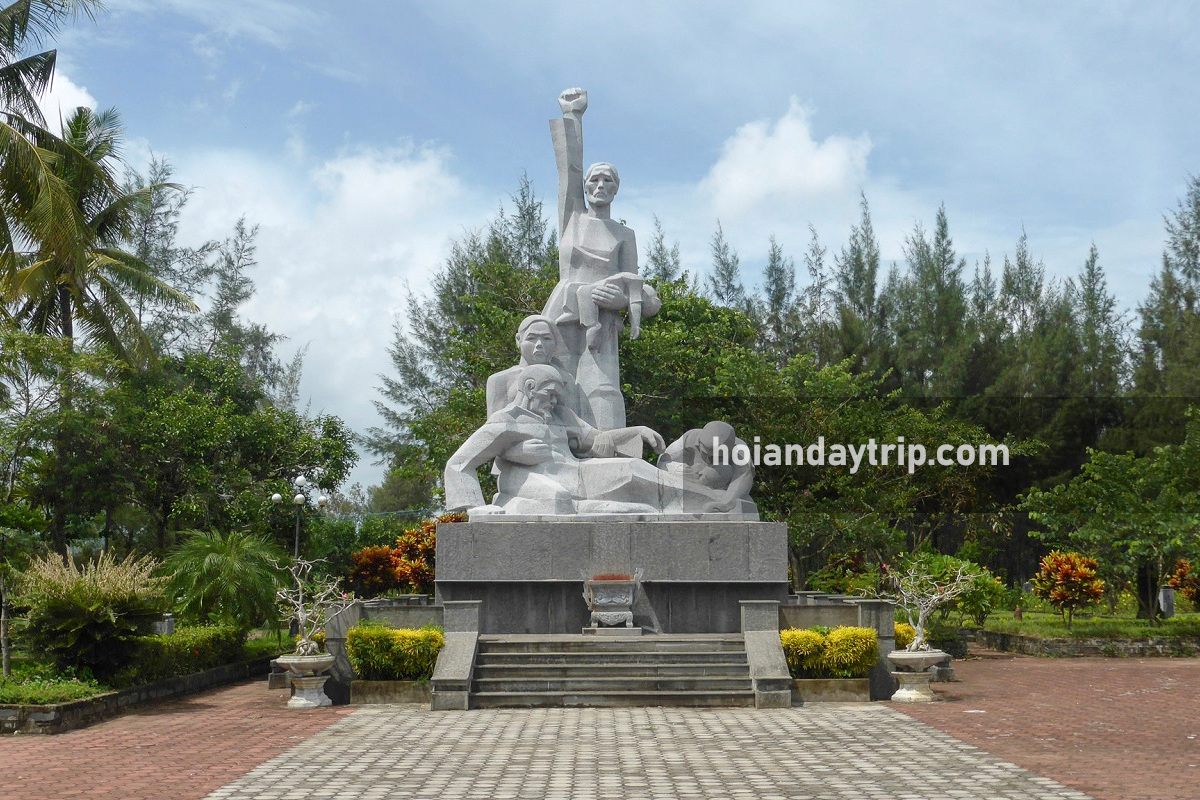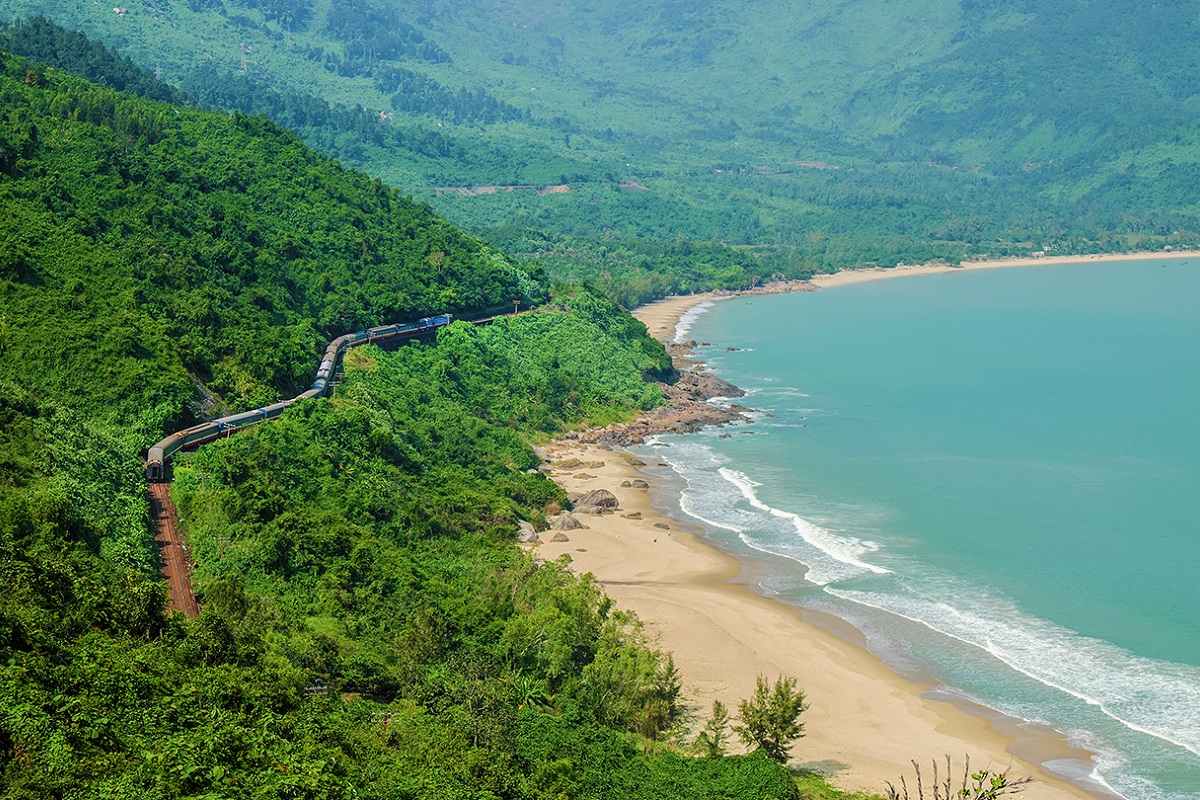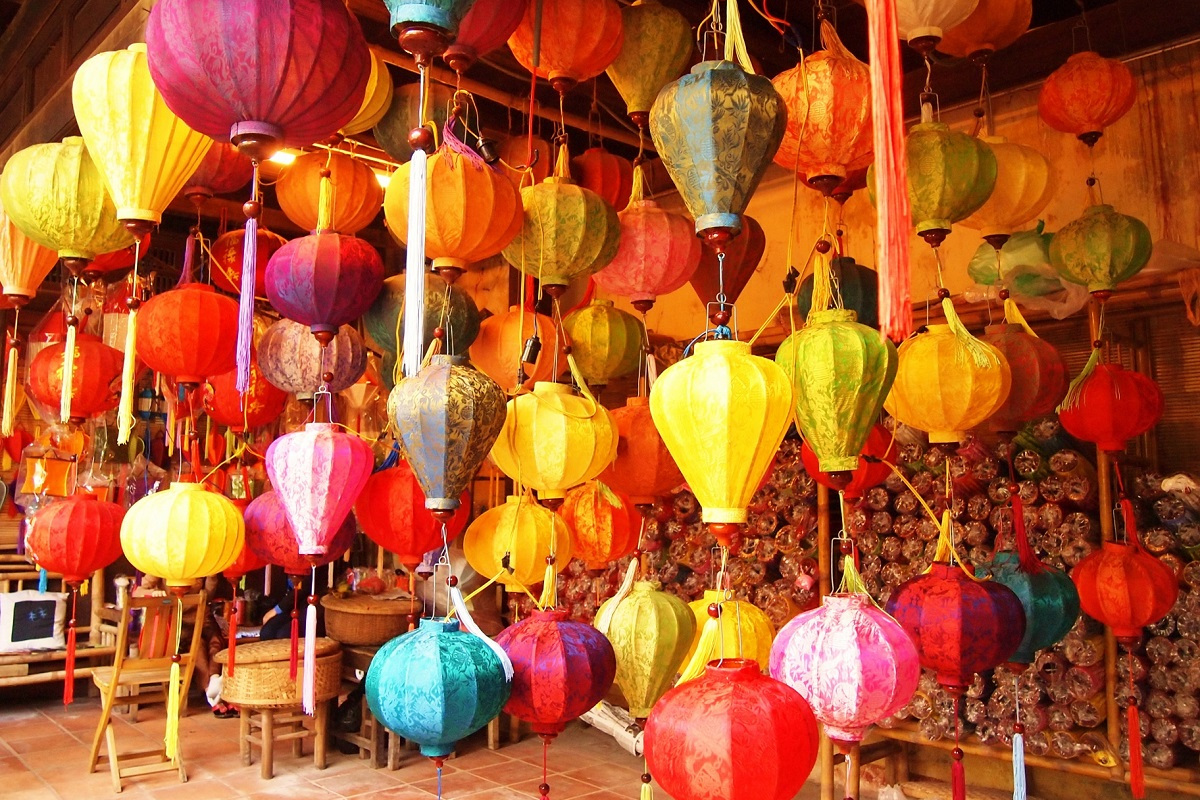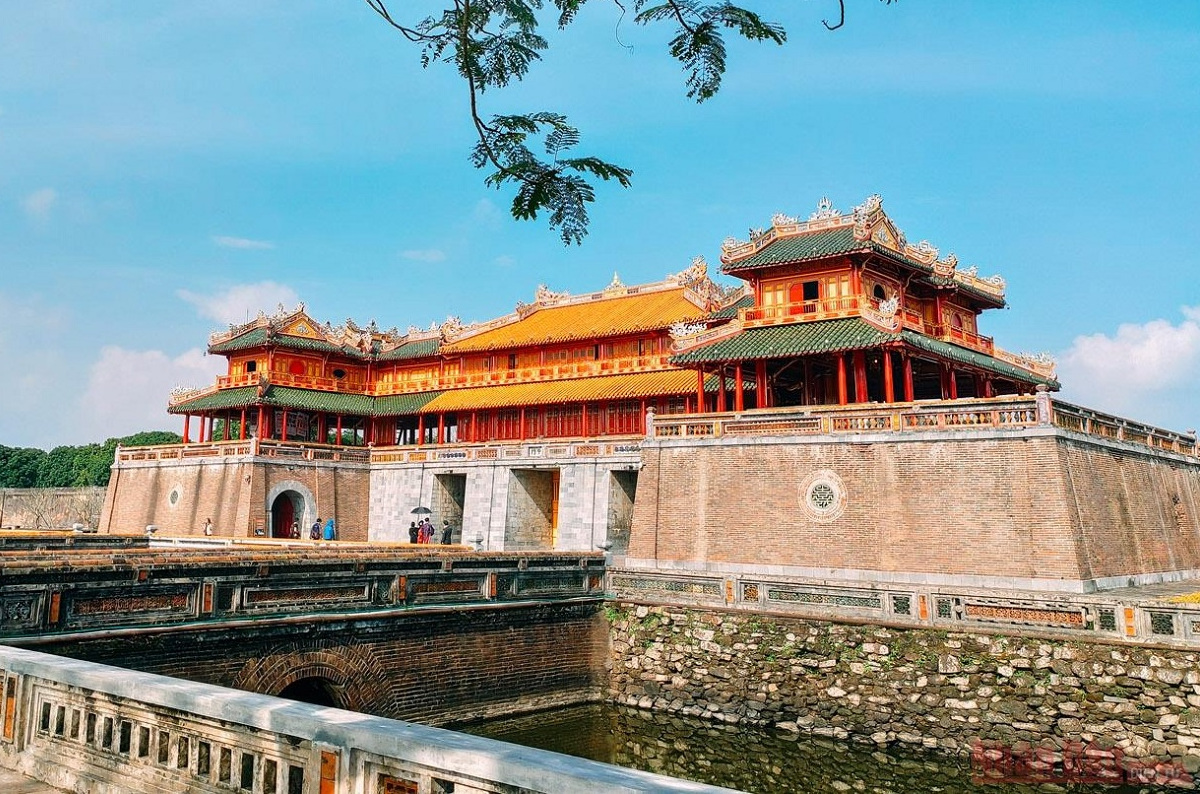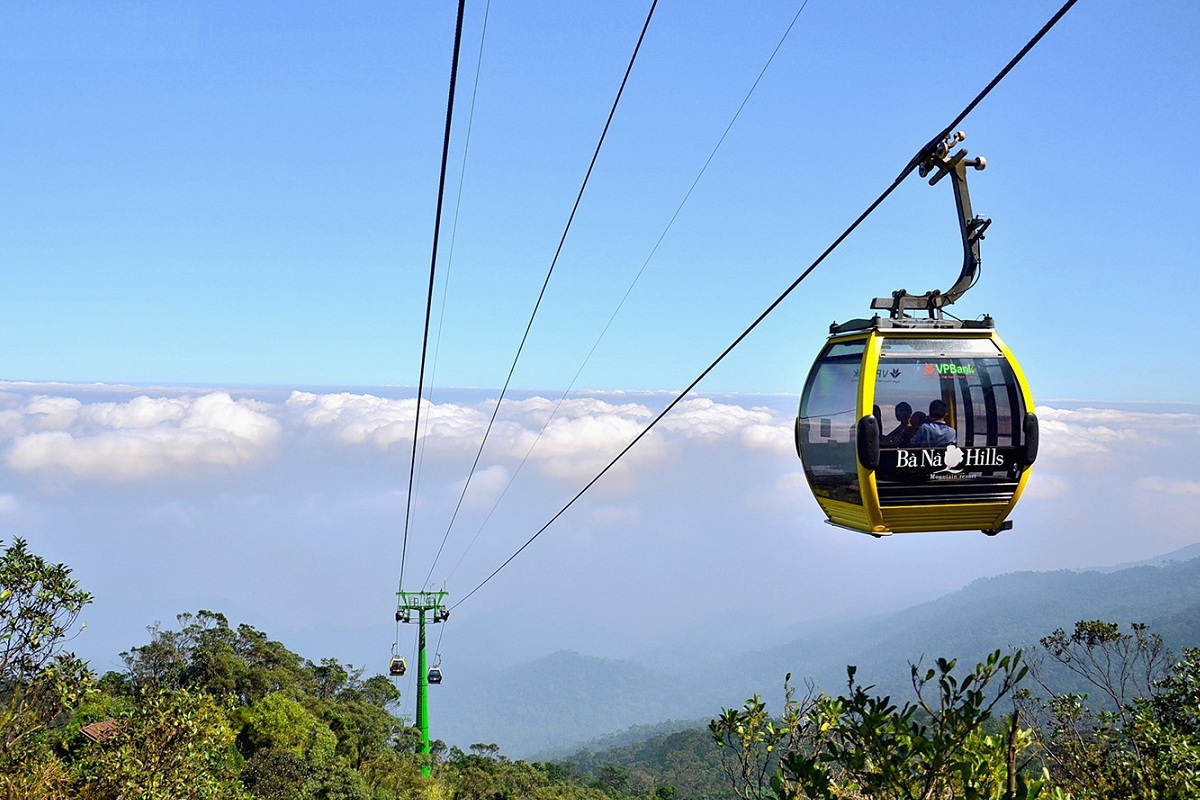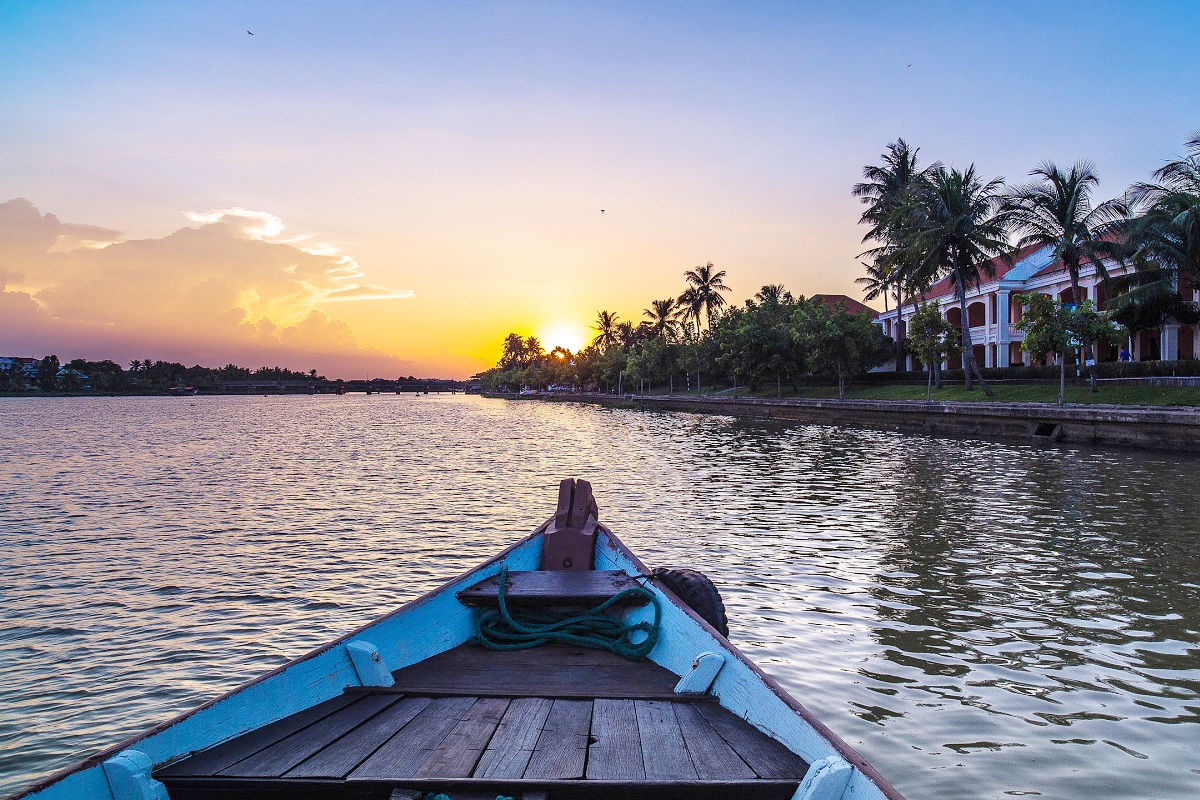Thien Mu Pagoda is in the itinerary of any Hue city tours and day trips from Da Nang or Hoi An, because of its various interests. In short, it’s really worth a trip. For visitors, this Buddhist site has grand, ancient architectures to marvel at and photograph. Its long history (from 17th century) allows us to learn a lot about what happened in the site, city and the country in the past. Thanks to the hilltop location, one of the best spots to view Perfume River is here, especially during the sunset every afternoon. A few walks from the bank, it’s easy to get by dragon boat from the city center, and of course, a cruise is a better experience than by road vehicles.
This comprehensive traveler guide aims to provide reliable information about all sides of Thien Mu Pagoda, a part of the Unesco-listed Complex of Hue Monuments. A city tour or day trip from nearby southern cities never excludes it in the itinerary. In the same bank, the Citadel, Dong Ba Market, itself and a dragon boat ride are perfect to spend a half of day. For the next few hours, emperor tombs are what tourists often like to sightsee.
Read also:

Table of content
- 1 Thien Mu Pagoda (Pagoda of the Celestial Lady)
- 2 The Best Time to Visit Thien Mu Pagoda
- 3 Thien Mu Pagoda History
- 4 Buildings in Thien Mu Pagoda
- 4.1 Phuoc Duyen Tower
- 4.2 Four Stele Pavilions and the Great Bell
- 4.3 Tam Quan – The Three-Arched Gate
- 4.4 Dien Dai Hung – Hall of the Lord Buddha
- 4.5 Dao Tan’s Garden
- 4.6 Car of Thich Quang Duc “The Burning Monk”
- 4.7 Hall of the Ksitigarbha & Hall of The Bodhisattva
- 4.8 Tomb of Thich Don Hau Monk
- 4.9 Thien Mu Pagoda’s Gardens
- 5 In the Surroundings of Thien Mu Pagoda
- 6 How to Get to Thien Mu Pagoda & Parking
- 7 Things to See and Do near Thien Mu Pagoda
- 8 Restaurants near Thien Mu Pagoda
- 9 Thien Mu Pagoda Tour
- 10 Thien Mu Pagoda on Google Maps
- 11 Related Posts
- 12 Thieu Tri Tomb: The Peaceful Royal Tomb of Hue
- 13 Bach Ma National Park: Hiking, Trekking in Da Nang and Hoi An
- 14 Hue to Da Nang By Train: The Best Train Ride in Vietnam
- 15 Hue Royal Tombs: A Complete Guide and What is Best?
- 16 The Hue Abandoned Water Park (Thuy Tien Lake Waterpark)
- 17 Minh Mang Tomb Complete Visitor Guide
- 18 Tu Duc Tomb Complete Visitor Guide
- 19 Hoi An or Hue: Which is Better?
- 20 Lang Co Vietnam Travel Guide
- 21 Thien Mu Pagoda: Guide to Hue’s Most Famous Buddhist Temple
- 22 Perfume River Cruise: Guide to Best Boat Tour in Hue Vietnam
- 23 Tomb of Khai Dinh: The Most Unique Royal Tomb of Hue
- 24 Hai Van Pass Da Nang: Map, Route, Weather, History, Tour
- 25 Hue Imperial City and Forbidden City
- 26 Featured Tours and Experiences
- 26.0.1 Bach Ma National Park Tour from Hue
- 26.0.2 Bach Ma National Park Tour from Da Nang/Hoi An
- 26.0.3 Hoi An Sunrise Fish Market Tour
- 26.0.4 My Lai Massacre Tour
- 26.0.5 Golden Bridge/Ba Na Hills & Hoi An Tour
- 26.0.6 Hoi An Instagram Tour
- 26.0.7 Ky Anh Tunnel & Tam Thanh Mural Village Tour
- 26.0.8 Da Nang to Hue Motorbike Tour with Hai Van Pass & Easy Rider (1 Way)
- 26.0.9 Hue to Da Nang Motorbike Tour with Hai Van Pass & Easy Ride (1 Way)
- 26.0.10 Hue to Hoi An Motorbike Tour with Hai Van Pass & Easy Rider (1 Way)
- 26.0.11 Hoi An to Hue Motorbike Tour with Hai Van Pass & Easy Rider (1 Way)
- 26.0.12 Tra Que Vegetable Village Tour with Cooking Class
- 26.0.13 Ba Na Hills Half Day Tour from Hoi An
- 26.0.14 Marble Mountain & Hoi An Day Tour from Da Nang Port
- 26.0.15 Hue Day Tour from Chan May Port with Lunch
- 26.0.16 Marble Mountain & Hoi An Tour from Chan May Port
- 26.0.17 Ba Na Hills/Golden Bridge Tour from Da Nang Port
- 26.0.18 Ba Na Hills/Golden Bridge Tour from Chan May Port
- 26.0.19 Golden Bridge Private Tour with Ba Na Hills & Lunch
- 26.0.20 Ba Na Hills Afternoon Tour with Golden Hands Bridge
- 26.0.21 Ba Na Hills Private Tour with Golden Hands Bridge
- 26.0.22 Ba Na Hills Half Day Tour with Golden Bridge
- 26.0.23 Ba Na Hills Early Morning Tour to Beat the Crowds
- 26.0.24 Golden Bridge and Ba Na Hills Night Tour
- 26.0.25 Golden Hands Bridge Tour In Sunrise or Sunset (1/2 Day)
- 26.0.26 Cam Kim Island Bicycle Tour From Hoi An
- 26.0.27 Cham Island Tour From Hoi An (Group Tour)
- 26.0.28 Cham Island Tour From Da Nang (Group Tour)
- 26.0.29 Hoi An Vegetarian Food Tour
- 26.0.30 Hoi An Evening Walking Food Tour with Local Foodie
- 26.0.31 Private Hoi An Basket Boat Tour (Shuttle Bus, Bicycle, Bike)
- 26.0.32 Half-day Am Phu Cave Tour (Private)
- 26.0.33 Hoi An Countryside Tour by Electric Car or Bike
- 26.0.34 Da Nang Tour Package From Singapore
- 26.0.35 Hoi An Evening Tour From Da Nang with Lantern Boat Ride
- 26.0.36 Hoi An Walking Food Tour Through Laneways
- 26.0.37 My Son Sanctuary and Hoi An Old Town Tour
- 26.0.38 My Son Day Trip From Hoi An including Marble Mountains and Basket Boat
- 26.0.39 Half Day Hoi An City Tour With River Cruise
- 26.0.40 Son Tra Peninsula Tour with Marble Mountains (Private/Small Group)
- 26.0.41 Hue Day Trip From Hoi An with Hai Van Pass, River Cruise & Lunch
- 26.0.42 Hoi An Ancient Town and Countryside Tour (Bests of Hoi An Tour)
- 26.0.43 Hoi An Tour From Da Nang Airport (Private, Optional Lunch)
- 26.0.44 Hoi An Day Trip From Da Nang (Marble Mountains, Basket Boat, Old Town)
- 26.0.45 Da Nang City Tour From Airport (Private, Optional Lunch)
- 26.0.46 Hoi An City Tour with Lantern Class, Lantern Boat, Night Market & Local Food Sampling
- 26.0.47 Marble Mountains, Basket Boat Ride & Hoi An Old Town Walking Tour
- 26.0.48 Marble Mountains & Golden Bridge/Ba Na Hills Day Tour
- 26.0.49 Marble Mountains & Monkey Mountain Tour (Half-day, Private)
- 26.0.50 Private Golden Bridge Sunrise Tour (Half-day, Optional Lunch)
Thien Mu Pagoda (Pagoda of the Celestial Lady)
Thien Mu Pagoda Introduction
Thien Mu Pagoda (or Linh Mu Pagoda, Pagoda of the Celestial Lady, Pagoda of the Heavenly Lady or Chua Thien Mu) is a famous religion spot 4 km west of Hue city center, It is built in the 17th century on Ha Khe Hill by the first of Nine Nguyen Lords, making it the oldest Buddhist temple. Over constructions and reconstructions, nowadays this is a cluster of 17 buildings varying in size and function. All are arranged well-proportioned on an axis and surrounded by lush gardens and pines. Thanks to the prime location, it’s easily accessible by road and waterway. The best-known transport to it is a dragon boat cruise on Vietnam’s most poetic river the Perfume. In 1993, Thien Mu Pagoda became a part of the Complex of Húe Monuments, a Unesco world heritage site.
The 7-storey tower of Thien Mu Pagoda is one of Hue’s unofficial emblems.
What is Thien Mu Pagoda Famous For?
Thien Mu Pagoda is famous for its long history – from 17th century, magnificent Buddhist architecture, scenic locational setting – atop hill by Perfume River and dragon boat cruise to get it. Its most iconic building is the Phuoc Duyen Tower which appears in uncountable works of art about Hue. For local tourists, this attraction is its relation to a love curse that couples will break up after visiting it.
Thien Mu Pagoda Ticket
A visit to Thien Mu Pagoda doesn’t require an entrance ticket, because it’s a Buddhist place. All pagodas in Hue are without admission fee too.
Dress Code
Thien Mu Pagoda is a Buddhist site and it requires a dress code to visit around, especially in sacred spaces. Armpits, navel and knees have to be covered, just to make sure that not too much skin shows. The clothings needs to be made of the proper kind of fabric. For example, see-through one is not recommended because it’s thought not to express a respect enough to the monks. Before walking in praying areas, shoes should be taken off and hat, sun glasses, rain poncho or umbrella should be removed. Moreover, visitors need to keep silent, walk gently and take pictures without flash.
Thien Mu Pagoda Facts
– Construction of Thien Mu Pagoda links to a legend about a celestial lady nightly telling people that a great personality would come and build it.
– Named the Pagoda of the Celestial Lady but no lady is worshipped in the pogda.


The Best Time to Visit Thien Mu Pagoda
In the Sunrise
The monks in Thien Mu Pagoda wake up before the sun appears, to chant and prepare everything for a new day. Meaning that the pagoda opens its door at that time. If visiting, travelers can enjoy the serenity, calmness and cool temperature while wandering without crowds nearby. That’s all for perfect sightseeing. After that, local eateries and coffee shops along the riverside road are nice to have breakfast and a coffee boost, before exploring the Imperial City.
The dry season in Hue is from May to September, with an average temperature of 28oC. Hottest months are May and June. During that time, the degrees may be up to 39oC. So, visiting Thien Mu Pagoda in the early morning is best to avoid the strong heat.
In the Sunset
Sunset on the Perfume River is really splendid, mellow. It’s one of the most awaited things to see in a visit to Thien Mu Pagoda in the afternoon. Standing on the outlook near the tower, the road or down the riverbank, this brilliant beauty is easily catched. After the sundown, travelers can get a cruise downstream to the city and see its lights. If riding a bicycle, it’s possible to bring it in the boat.
The Wet Season
The wet season in Hue ranges from September to February the next year. It features a high rainfall, little sunny days and low temperatures in the last months. Don’t forget to bring a rain poncho or umbrella before leaving the room. The most severe time is from October to December when typhoons are formed and hit the area. As a result, the overflowed Perfume River causes floods in the city and the traffic on it is dangerous. There, sightseeing and cruising the river are not recommended to travelers.
Fact: One of the most deadly typhoons was in 1904. It caused the collapse of Truong Tien Bridge and many other buildings in the city.


Thien Mu Pagoda History
Gao Pian Occult Arts
Vietnam was occupied by the Chinese before 10th century. During that time, Gao Pian (a geomancist) traveled around the country to seek blessing places where a great local leader may be borned and overthrow the foreign rulers then. Thien Mu Pagoda’s hill is one of them, seen as a head of dragon drinking water of the Perfume River. He requested to dig a pond behind the pagoda to cut the head from the body. This occult art was just disable when people placed a turtle by that pond, meant to drink its water until running out.
Champa Period
According to historians, there is a Cham tower constructed on Thien Mu Pagoda formerly because of its hilltop and river-nearby location. In the opposite bank, Champa kingdom’s emperors built an earthen-walled city (named Thanh Loi by Vietnamese). It dates back from the 5th and 6th centuries, and is closely linked to the Hindu temple. In the late 18th century, a leader of the Tay Son Dynasty held a sacrifice to heaven and earth here, as its holy position.
Thien Mu Pagoda Legend and Establishment
Nguyen Hoang, the first Vietnamese lord who ruled Hue region, built Thien Mu Pagoda in 1601 when he was seeking a seat of his power. He cruised along the Perfume River and in Kim Long village, locals shared with him a legend. According to it, a celestial lady wearing a red shirt and green pants appears every night in Ha Kha Hill. She said that one day, a great leader would come, build a pagoda there and since then, happiness and richness are given to people. After hearing, Nguyen Hoang told he was the man in the legend, and Thien Mu Pagoda was established.
In other parts of the legend, the lord found a perfect location to place his citadel, and the river he cruised was named the Perfume River.
Renamed by Tu Duc King
From 1862 to 1869, the name of Thien Mu Pagoda (“Pagoda of the Celestial Lady”) was changed to Linh Mu Pagoda (“Pagoda of the Holy Lady). This decision was made by Tu Duc, the 4th (reigning) king. Due to the mumps, he couldn’t have biological childrens. One of his efforts in seeking a successor is stopping the blessings from Heaven to someone or some places. However, after 7 years, nothing was better and he returned the original name to the pagoda. Nowadays, two names are both popular.

Buildings in Thien Mu Pagoda
Phuoc Duyen Tower
This 21-meters-tall octagonal brick tower was built from 1844 to 1846 on the orders of King Thieu Thi, based on the design of his father King Minh Mang. One of the reasons is to celebrate the 80th birthday of his grandmother. Thanks to its hilltop and in-front location, it looks grandeur from the Perfume River that has become an iconic postcard to the city. There are plenty of artworks depicting the scene, including souvenirs sold in shophouses near the pagoda. It’s a nice background for instagram pictures when the visitors stand on the staircase in front or on a dragon boat. Its name carries beautiful significance in Buddhism.
Located behind a ruined pavilion after the terrible 1904 typhoon, Phuoc Duyen Tower is designed with 7 storeys. Each of the five lowest ones houses a bronze Buddha, and silver and gold Buddhas were in the highest floors. In the wartime, many statues were lost so today, the main door is closed to visitor’s access. It opens only by the leader monk in chanting times. Daisy (meaning “longevity”), Buddhist swastika symbol and ceramic tiles are used to decorate every side. Behind the tower, there is a memorial stele with content written about feelings of Khai Dinh after his visit here in 1919.
Four Stele Pavilions and the Great Bell
There are 4 stele and one bell pavilions standing around Phuoc Duyen Tower. All are made of bricks, covered by tiles, and have open entrances. The bell pavilion is to the northwest, housing Dai Hong Chung (“the Great Bell”) that is the largest of the kind in Vietnam. Casted in 1710, its weight is nearly 2 tonnes and on the exterior face, iconographic symbols from 3 religions and ancient Chinese are used to decorate. Bronze statue of one of 9 sons of the dragon is placed on its top, meant to distant and loud sound throughout its existence. Due to visitor’s awareness, the bell is not in use anymore.
To the opposite side (northeast), there is another national treasure, the Stele of Nguyen Phuc Chu Lord. Carved in 1715, it has 1,250 Chinese letters that tell us about reconstruction of the pagoda in the previous year and Buddha teachings. It’s also unique because of its stone turtle base, like in the Temple of Literature. Nearby, the smaller stele records construction of Phuoc Duyen Tower in 1846. The last stele pavilion stands by a scenic outlook, listing 20 best beautiful landscapes in Hue and a Thieu Tri King’s poem about the pagoda.
Tam Quan – The Three-Arched Gate
This three-arched entrance gate provides three doors to enter the worshipping zone. The middle one originally is exclusive for the monks, the right and the left are for walking in and leaving respectively. Two guardian statues made by straw and mortar, are placed in each door. The gentle man represents the “good nature of people” and the one with a strong altitude presents the opposite side. This couple expresses the hospitality of the Buddhist temple for everybody, no matter who. In the upper section, the God of Heaven is worshipped but it faces the Buddha Hall instead of the outside like usual.
On the same wall, a drum and a bell pavilions are added, to the left and right. The bell was casted in 1815 (first king’s reign) and replaces the role of the Great Bell. In two corners between walls, there are 6 Defenders of the Justice in total, meant to advise people always towards the good. Wild animals like snakes, road, tiger, turtle, and so on, represent primal instincts of man.
Dien Dai Hung – Hall of the Lord Buddha
Dai Hung Palace is the main building, at the end of a pine-sided walkway. It’s first established by Nguyen Hoang Lord in 1601 and reconstructed by his 5th successor Nguyen Phuc Chu in 1714. After largely damaged by 1904 typhoon and bombings, it’s renovated and still unchanged up to date. The innermost space of this hall is dedicated to worship of the Buddha, allowed for prayers only. Before entering it, visitors have the chance to see old antiquities, including a bronze chime created in 1677 and a Laughing Buddha in the glass box.
Architecture of Dai Hung Palace is a typical example of Hue’s garden houses, featuring local flat tiles (named ngoi liet) and green surroundings. Dragons and Dharma wheel top margins of the roof, expressing a mix of royal and Buddhist cultures. On the space between two roofs, there are paintings depicting life stages of the Buddha in India. A big bronze incense urn is placed before the main staircase. Each prayer is recommended during one stick only to prevent fire and reduce air pollution.
Note: Visitors need to take the shoes off, remove glasses and down the umbrella before coming into this building.
Dao Tan’s Garden
This is a small landscaped garden built to the left of Dai Hung Palace. It has a S-shaped fish pond, mountain miniatures and flowers. Its construction was under the request of Dao Tan (an imperial mandarin) who worked in the reigns of 3 Nguyen kings. He was a famous composer for the art of Tuong opera, and later generations praised him as “the ancestor”.
Car of Thich Quang Duc “The Burning Monk”
Next to the gardens, visitors will see a reminder about one of the most influential events in the Vietnam War. It’s the car which Thich Quang Duc monk drove to a busy crossroad of Saigon (formerly Ho Chi Minh City) before burning himself. He aimed to protest unfair policies of South Vietnam’s rulers to Buddhists. Magically, his heart remained intact and not burnt, later called “heart of the Bodhisattva”. Vietnamese and people all over the globe were shocked and admired his bravery and patriotism. Some amazing pictures about this event were published then, including international journalist prizes. After seeing, US president Kennedy said that “no news picture in history has generated so much emotion around the world as this one”.
Hall of the Ksitigarbha & Hall of The Bodhisattva
Behind the Dai Hung Palace, these halls are smaller, rebuilt after destruction of other buildings caused by the 1904 typhoon. Remains of Huong Nguyen Pavillion in the front of the tower were reused. The first hall originally was for worship of Quan Cong, a legendary Chinese military general. The second one is the home of ash pots that the family of dead Buddhism followers brought to. On the death anniversary, the members will come ro pray and celebrate ceremonies.
Tomb of Thich Don Hau Monk
Thich Don Hau monk’s tomb is the last building, in the shape of a tower with multiple-layer roof. Its owner was borned in 1905 and passed away in 1992. He was the only monk accepted to be buried in the ground of Thien Mu Pagoda, thanks to his contributions to the country and Buddhist associations. He became the leader of the pagoda at the age of 40, but was quickly jailed by the French. Mother of Vietnam’s last king Bao Dai saved him. From that time to his death, he joined the communist party and was appointed to many important positions in the Vietnam Buddhist Sangha and the National Assembly.
Thien Mu Pagoda’s Gardens
Thien Mu Pagoda is amongst the best representations of Hue’s gardening tradition that emphasis on harmonization between people and nature. Its ground is filled by pine trees, fruits, flowers, waterlily/fish ponds, grasslands and bonsai pots. This is an extinction between local architecture and other regions in the country, and abroad.



In the Surroundings of Thien Mu Pagoda
Tofu Pudding Vendors
Many vendors are from the parkings to the pagoda’s entrance, mostly selling the tofu (soy) pudding. When serving, the lady uses a spoon to convey portions of the pudding into a small bowl and adds a condiment made by cane sugar and pineapple. Ice cubes are available on request, highly recommended on hot days. Taking a low seat and enjoying its sweet flavours under the shaded trees, is a fun experience. In the late afternoon, the sparkly beauty of sunset is a bonus to romantic souls. A bowl costs from 10,000 to 30,000 VND. In a close distance, local fruits or boiling tubers or nuts are for sale to give a try. Price of an icy fresh cane sugar is only 15,000 VND, an ideal choice for refreshment.
Souvenir Shops
Near Thien Mu Pagoda, there are many shops where visitors can seek souvenirs, gifts, shirts, local products, handicraft objects, Buddhist items, ao dai long dress, and more. Things with the iconic Phuoc Duyen tower are all around, for example, a shirt reasonably costs from 100,000 to 200,000 VND. Bargaining is needed because the selling price is often higher than usual.
How to Get to Thien Mu Pagoda & Parking
Thien Mu Pagoda Location
Thien Mu Pagoda is on Ha Khe Hill by the Perfume River, 4 km east of Hue city center and the Imperial City. To get to it, travelers need to move along the riverside road named Nguyen Phuc Nguyen or take a boat ride. From the Tomb of Minh Mang, this well-known attraction is accessible by Kim Phung and then Van Thanh roads.
Dragon Boat to Thien Mu Pagoda
Thien Mu Pagoda is one of some places of the Unesco-listed Complex of Hue Monuments that can be reached by waterway. Historically, the emperors used a dragon boat to cruise the Perfume River from the Royal Palace. Now, it’s exclusive to them and has become a popular tourist activity. Travel time is around 30 minutes from the city center and vice versa. Cost starts from 130,000 VND one way. To experience, travelers can come to the pier near symbolic Truong Tien Bridge or behind Ho Chi Minh Museum, or any tour operator nearby. See more details (and about other stunning rides) in our guide to Perfume River Cruise.
Road Vehicles
All road vehicles are convenient to get to Thien Mu Pagoda from the city center and the Citadel. Average distance from there is 4 km, so a four-seat taxi may cost 60,000 VND, and travel time is only 10 minutes. If riding a bicycle or motorcycle by yourself, travelers just need to follow the romantic riverside road Kim Long – Nguyen Phuc Nguyen until seeing the signal of the pagoda. For a day rental of a well-maintained motorcycle, the pay is from 100,000 to 200,000 VND (without fuel). To go to royal tombs, choosing the upstream route Van Thanh – Kim Phung, new interesting things may be seen.
If you are seeking a special way to go to Thien Mu Pagoda, let’s try a ride on the bicycle rickshaw (xich lo or sit lo). It’s slow, relaxing enough to see how the life of locals goes on and feel safe. To book a rider, you should go to a third-party like hotel reception and local tour operator to avoid overpriced offers.
Parking
Parking lots are many in Thien Mu Pagoda and the bike fee is around 5,000 VND. There is no charge if you put it in the pagoda. Following the small cement road between shophouses (near the entrance), riding uphill and entering by the second gate to the left. Remember to lock the bike as there are no guardians there.


Things to See and Do near Thien Mu Pagoda
An Hien Garden House
1 km to the east of Thien Mu Pagoda, this garden house is beside the riverside road. First owned by a daughter of Duc Duc King in 1883, it’s a property of the current owner family over many transfers. In the end of a tree-lined walkway and a waterlily pond, there are 3 compartments and 2 wings furnished by precious furniture. In the surroundings, flowers and trees from all regions of Vietnam may be seen.
Hue Temple of Literature
750 meters via Van Thanh Rd to the west, this is the last national temple of literature of Vietnam, built in 1808. Its highlights are the three-arched gate on top of a staircase and 36 steles placed on stone turtles. As a representation of education, local students often visit here to pray to get high scores in important examinations. The temple is to honour military mandarins constructed next to, but now ruined.
Upper and Lower Huyen Khong Temples
These sister Buddhist temples include the lower one in Nguyen Trong Nhan Rd, and the upper one in Hon Vuon Mt, 2,5 km and 7,5 km west of Thien Mu Pagoda respectively. While the first boasts of a tall tower copied from Bodh Gaya where the Buddha attained enlightenment, the second owns such peaceful gardens. It’s worth a visit to both, if you have time.
Restaurants near Thien Mu Pagoda
Banh Uot Huyen Anh
Between Thien Mu Pagoda and the Citadel, this local family-run restaurant serves fresh rice paper dishes, including rolls with grilled pork and peanut sauce to dip. If you like to switch to rice vermicellis, it’s available.
Ben Xuan Garden House Theatre
Located by the Perfume River, this garden house is a result of a couple of husband and wife over 10 years. Dining tables here require a reservation, and Hue’s folk music is available to book during the dinner too.
Quan Nhau Bo Ke
If looking for an authentic experience in a local restaurant, coming to this place, a few walks from the entrance of Thien Mu Pagoda. True Hue cuisine is served here, with choices varying from pork, chicken, fish, seafood to animals that you never think they are foods. In the afternoon, why not a cold beer here to view the sunset and unwind?
Thien Mu Pagoda Tour
Hue Day Trip from Da Nang or Hoi An
An organized day tour is the best choice to explore Hue’s best historical places from Da Nang and Hoi An. In the itinerary, travelers can expect to cruise the Hai Van Pass – a scenic coast road with panoramic outlooks and see Lang Co Lagoon – mirror-like brackish lake with an Alpine view before arriving at Hue. In the former capital of Vietnam, Vietnamese food, lunch and sightseeing in four most famous places are included. There are lots of history and culture knowledge shared by a local guide, and photo opportunities. See more details in centralvietnamguide.com/hue-day-trip-from-da-nang-hoi-an.

Thien Mu Pagoda on Google Maps
Related Posts
Thieu Tri Tomb: The Peaceful Royal Tomb of Hue
Thieu Tri emperor tomb is an unpopular place to visit in Hue. From the city centre, it’s closer than Khai Dinh tomb, Minh Mang tomb and Gia Long tomb, and
Bach Ma National Park: Hiking, Trekking in Da Nang and Hoi An
Two best places for trekking and hiking in and near Da Nang are Son Tra mountain (peninsula) and Bach Ma national park. Which one is better is actually personal because these
Hue to Da Nang By Train: The Best Train Ride in Vietnam
Like Hanoi to Sapa, many travelers choose to get from Hue to Da Nang by train. Not just a cheap deal, the experience on this ride is definitely stunning and
Hue Royal Tombs: A Complete Guide and What is Best?
The Nguyen dynasty existed 143 years, from 1802 to 1945 with 13 emperors, but only 7 of them had their own mausoleum. On the map, all of these buildings are
The Hue Abandoned Water Park (Thuy Tien Lake Waterpark)
Recently, the Abandoned water park in Hue is known by travelers worldwide thanks to social media and online magazines, just like the Golden hands bridge in Da Nang. It was
Minh Mang Tomb Complete Visitor Guide
Minh Mang is the 2nd ruler of the Nguyen dynasty, the king of Vietnam from 1820 to 1840. His contributions to the country can’t be counted, including the largest territory Vietnamese
Tu Duc Tomb Complete Visitor Guide
Tomb of Tu Duc emperor is one of three most visited royal mausoleums in Hue. Two others are Minh Mang tomb – the tomb of Tu Duc king’s grandfather and
Hoi An or Hue: Which is Better?
Both Hoi An and Hue cities are in the middle of Vietnam, and they’re not far from each other (about 130 km). Therefore, for those who travel from north to
Lang Co Vietnam Travel Guide
Lang Co was a lovely backwater town nestled at the foot of spectacular Hai Van Pass for some decades. Not yet widely known because of the popularity of beaches in
Thien Mu Pagoda: Guide to Hue’s Most Famous Buddhist Temple
Thien Mu Pagoda is in the itinerary of any Hue city tours and day trips from Da Nang or Hoi An, because of its various interests. In short, it’s really
Perfume River Cruise: Guide to Best Boat Tour in Hue Vietnam
Perfume River cruise is a popular activity in Hue, Vietnam. Different from other sightseeing rides, this experience is by a dragon boat that was used only for the king formerly.
Tomb of Khai Dinh: The Most Unique Royal Tomb of Hue
Tomb of Khai Dinh is the last emperor mausoleum built in Hue and Vietnam. It’s famous for one-of-the-kind architecture and art that was never seen in the country at that
Hai Van Pass Da Nang: Map, Route, Weather, History, Tour
Truong Son or Annamite Range is the most dramatic mountain ridge in Vietnam. When it juts out into the sea, spectacular Hai Van Pass is formed. This amazing sculpture of
Hue Imperial City and Forbidden City
Located by the Perfume River, Hue Imperial City and Forbidden City are the 2nd and 3rd walls of the Citadel, seat of Vietnamese power from 1802 to 1945. These are home of luxury-decorated palaces,


















